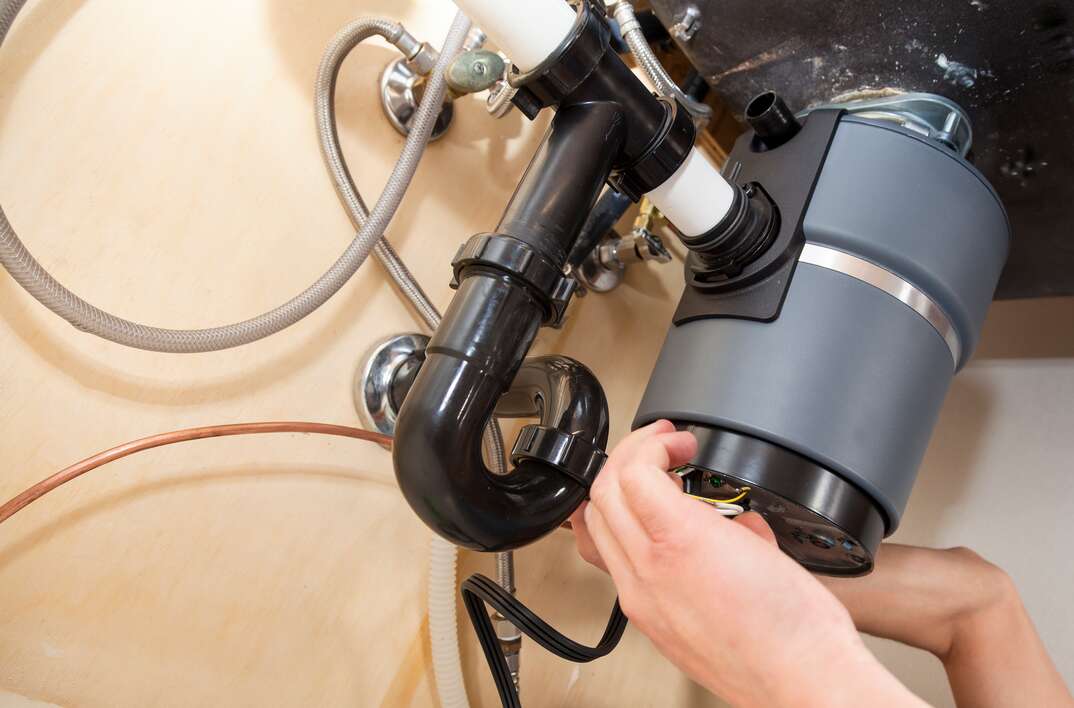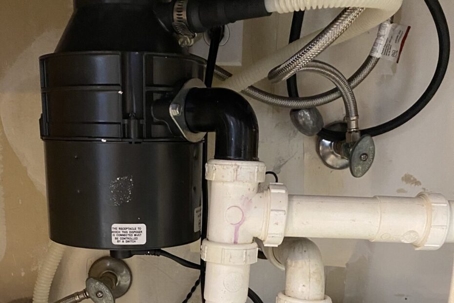Easy-to-Follow Techniques for Repairing a Leaky Garbage Disposal
Easy-to-Follow Techniques for Repairing a Leaky Garbage Disposal
Blog Article
We've stumbled on this article relating to Why Is My Garbage Disposal Leaking From the Bottom? directly below on the internet and thought it made perfect sense to write about it with you here.

Waste disposal unit are necessary kitchen area devices that assist in taking care of food waste effectively. Nonetheless, a dripping waste disposal unit can be an irritating and messy issue to deal with. Thankfully, several leakages can be taken care of easily with a few basic steps. In this post, we will certainly review just how to repair a leaking waste disposal unit successfully.
Introduction
Waste disposal unit are mounted under kitchen area sinks and are developed to shred food waste right into smaller sized items, allowing it to go through the pipes system easily. While these tools are normally trusted, leakages can occur gradually due to deterioration, loose connections, or damages to the device.
Step-by-Step Overview to Repairing a Leaking Waste Disposal Unit
Shut off the Power
Prior to attempting any repairs, ensure that the power to the garbage disposal unit is turned off to stop the risk of electrical shock.
Situate the Leakage
Recognize the exact place of the leakage and determine the cause
Tighten Links
Use a wrench to tighten up any loose connections between the disposal system and the plumbing system.
Replace Seals or Gaskets
If the leak is because of used seals or gaskets, eliminate the old elements and replace them with new ones.
Patching Cracks or Openings
For splits or openings in the disposal system, usage epoxy or a suitable patching material to seal the damaged area.
Recognizing the Resource of the Leakage
Prior to trying to repair a dripping waste disposal unit, it is necessary to recognize the resource of the leak. This can typically be done with aesthetic inspection or by conducting easy examinations.
Visual Inspection
Inspect the waste disposal unit device meticulously for any type of signs of water leak. Pay very close attention to locations around seals, gaskets, and link factors.
Checking for Leakages
One way to examine for leaks is by running water with the disposal device and checking for any type of visible signs of leakage.
Typical Sources Of Leakages in Garbage Disposals
Worn Seals and Gaskets
Seals and gaskets play an essential function in avoiding water from dripping out of the garbage disposal. Over time, these parts can weaken, bring about leakages around the disposal system.
Loose Connections
The connections in between the waste disposal unit and the pipes system can end up being loose over time, causing water to leakage out during procedure.
Fractures or Openings in the Disposal System
Physical damages to the garbage disposal, such as cracks or openings in the real estate, can likewise cause leaks.
Tools and Products Needed for Repairing a Dripping Garbage Disposal
Before beginning the repair work procedure, gather the needed tools and materials, including a screwdriver, adjustable wrench, plumbing's putty, substitute seals or gaskets, and epoxy or patching material for fixing cracks or openings.
Evaluating the Waste Disposal Unit After Repair
As soon as the repair is full, evaluate the garbage disposal by running water with it to guarantee that the leak has been dealt with.
Preventive Maintenance Tips to Avoid Future Leaks
To avoid future leaks, it is important to perform normal maintenance on your garbage disposal. This includes keeping it tidy, avoiding placing non-food things or hard things down the disposal, and occasionally checking for leaks or other problems.
Conclusion
Finally, repairing a dripping waste disposal unit is a reasonably simple procedure that can be finished with fundamental devices and products. By following the steps detailed in this short article and exercising click here precautionary maintenance, you can keep your garbage disposal in good working problem and prevent pricey repairs in the future.
What to Do About a Leaking Garbage Disposal
A leaking garbage disposal often goes unnoticed until you confront a sopping cabinet, a foul-smelling puddle, or an audible drip-drip-drip from the unit. The fix can be frustrating, too, because the leak can stem from a number of components in the system. Fortunately, with a little sleuthing, you can zero in on the leak and—depending on the exact location—stop the icky oozing and repair the component that caused it. Worst case scenario, if it turns out that the garbage disposal must be replaced, installing a new one is a reasonable do-it-yourself task for those with basic plumbing skills. Read on to keep the cash you’d otherwise hand over to a pro.
Prepare to find the leak
Prior to testing the garbage disposal for leaks, unplug it at the wall outlet and turn off the power from the breaker box to prevent electrical shock. Then insert a watertight sink stopper into your sink drain and wipe the unit dry with a clean cloth. In any handy container, mix a few drops of food coloring into a few cups of water, and pour the dyed water onto the sink stopper to help you locate the leak.
Investigate the source
the top, where the disposal meets the sink drain the side, where the dishwasher hose or main drain pipe connects to the disposal or the bottom of the unit Inspect each of these locations while gliding a light-colored rag over the unit; the dyed water will readily show on the rag and reveal the location of the leak. If a leak isn’t immediately apparent, remove the sink stopper and pour a few more cups of dyed water down the sink drain, then check for leaks again. Leaks near the top of the unit are more likely to show themselves while the sink is plugged, while side and bottom leaks are more noticeable while the sink is unplugged.
The metal sink flange that sits directly inside the sink drain is typically sealed around the top with plumber’s putty (a clay-like sealant) and then secured from under the sink with bolts. If the plumber’s putty deteriorates, or the bolts loosen, the flange can no longer form a watertight seal between the sink drain and the disposal—which could cause a leak at the top of the unit.
To reseal the leaky flange, you must first detach the garbage disposal. Start by loosening the screws securing the main drain pipe to the disposal, then loosen the screws in the metal clamp securing the dishwasher hose to the disposal and detach the drain pipe and dishwasher hose from the disposal. Loosen the screws in the mounting ring that connects the disposal to the metal mounting assembly beneath the sink, then pull down the disposal and carefully set it on a clean, dry surface. Loosen the bolts in the mounting assembly with a wrench, then pull down the mounting assembly and set it near the disposal.

As a keen person who reads on Why Is My Garbage Disposal Leaking From the Bottom?, I imagined sharing that excerpt was a smart idea. Loved our blog? Please share it. Let another person check it out. I enjoy reading our article about Why Is My Garbage Disposal Leaking From the Bottom?.
Schedule Services Report this page